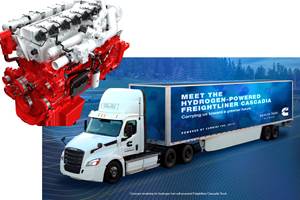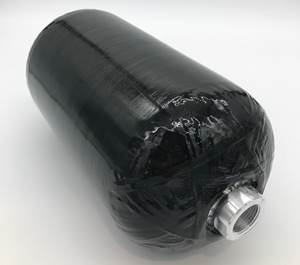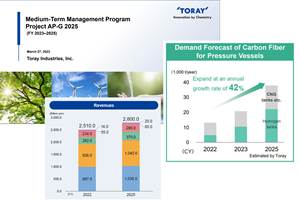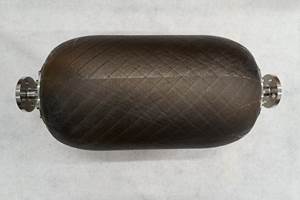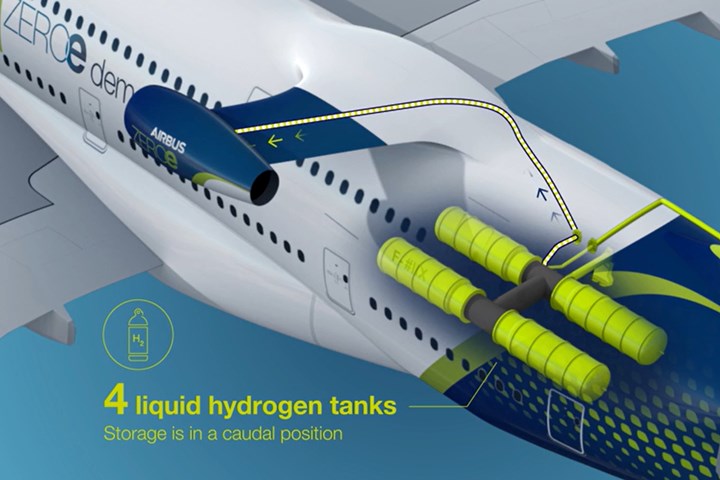
Photo Credit: Airbus
On February 22, Airbus (Toulouse, France) held a press event to announce its partnership with CFM International (Cincinnati, Ohio, U.S.) to develop and test a hydrogen combustion engine. The program aims to begin flight tests using an Airbus A380 aircraft by 2026, supporting the Airbus ZEROe program goal of a zero emissions (ZEROe) aircraft in service by 2035.
As explained by Sabine Klauke, chief technical officer (CTO) for Airbus, the demonstration aircraft is MSN001, the first A380 ever built, which was used for certification and later, as a testbed to certify the Rolls-Royce (London, U.K.) Trent XWB engines for the A350. This four-engine A380 testbed will now be modified with a structural stub on top of the fuselage aft of the wings. This stub will support a GE (Cincinnati, Ohio, U.S.) Passport engine, modified to directly combust hydrogen (H2) as fuel.
The engine will be fed from four cryogenic tanks, each holding 100 kilograms of liquid hydrogen (LH2) at -253°C. The tanks are being developed by ZEROe development centres (ZEDC) — in Bremen (Germany), Nantes (France) and Madrid (Spain) — which were opened last year. Both the H2-fueled Passport engine and LH2 tanks will be equipped with sensors to capture a wide range of data and the tanks will be housed within a hermetically sealed container.
The ZEROe video and photo gallery is available here.
CFM Intl. and composites
Mohamed Ali, VP of engineering at GE Aviation, explained that the Passport test engine program will implement a cryogenic fuel delivery system to convert the LH2 into gas, which will be injected into the engine, mixed with air. This mixture is not only completely gaseous — versus the liquid jet fuel/air mixture fed into conventional engines today — but H2 also burns at much higher temperatures and 10 times faster than jet fuel. Ali said technology to control the flame and make it stable will need to be developed, but that CFM has a long history in advanced materials that can help deal with these new requirements.
GE’s Passport engine uses Ox/Ox CMC in the core cowl, mixer (shown here) and centerbody. Photo Credit: GE Aviation, “Ceramic matrix composites: Hot engine solution”
CFM’s advanced materials include high-temperature metal alloys and coatings and ceramic matrix composites (CMC) in the hot sections of engines as well as carbon fiber-reinforced polymer (CFRP) structures like fan cases, guide vanes and fan blades in the front “cold” section of the engine. In the Passport engine, aluminum oxide fiber-reinforced aluminum oxide (Ox/Ox) CMC is used in the corrugated, annular exhaust mixer as well as the centerbody and core cowls. Saving 20 kilograms in the mixer alone, CMC allows higher temperature combustion without additional coatings or insulation at reduced weight versus metal.
Composite cowl door (top) and inner barrel (bottom) for Nexcelle’s Integrated Propulsion System nacelle for GE’s Passport engine. Photo Credit: Nexcelle
Even more composites are included in the Passport engine’s nacelle as part of the Integrated Propulsion System (IPS) supplied by Nexcelle (Baltimore, Md., U.S.) — a 50/50 joint venture’s between Safran Nacelles (Paris) and ST Engineering’s (Singapore) Middle River Aircraft Systems in Baltimore. The IPS includes a 360-degree, single-piece composite inner barrel incorporating advanced acoustic protection for lower engine noise, a clamshell composite fan cowl offering improved maintenance and a composite thrust reverser (built by Safran Nacelles) which reportedly uses thermoplastic materials. Composites are featured quite heavily in the Safran Nacelles video below.
H2 tanks and composites
When asked by industry press if the tanks would be made from composites, Klauke responded that Airbus is looking at both metal and composites via its ZEROe Development Centres (ZEDC). When Airbus announced the ZEDC in Madrid last December, it noted: “Airbus has long been a pioneer in composite technologies in Spain, both in materials and manufacturing processes. The focus of the Spanish ZEDC is non-propulsive energy, systems for fuel cell cooling and fiber optics, as well as carbon fiber tanks for storing cryogenic liquid hydrogen. The tank development is done in a coordinated approach with the other Airbus national entities. These technologies are critical to fuel a future zero-emission aircraft, supporting the goal of an entry-into-service by 2035.”
One of the processes pioneered by Airbus in Spain is in-situ consolidation of thermoplastic composites (ISC TPC) using automated fiber placement (AFP) without an autoclave. By 2016, the Spanish composites R&D center FIDAMC (Getafe, a suburb of Madrid, Spain) had demonstrated ISC TPC skin-stringer panels as part of the ISINTHER project (see “Thermoplastic composite wings on the horizon”). This technology was further matured in the Clean Sky projects ICARO, TARGET, ECO-DESIGN and Green Regional Aircraft-Light Weight (GRA-LW), enabling it to be included in the Clean Sky 2 FTB#2 flight demonstrator (see “IIAMS wing box road map to certification”), which made its maiden flight in February 2022.
Notably, multiple programs have recently been announced which include investigating the use of thermoset and thermoplastic composites in hydrogen storage tanks, including:
- Lockheed Martin Australia (Canberra), Omni Tanker (Smeaton Grange, NSW, Australia) and the University of New South Wales (UNSW, Australia) seek to commercialize world-first composite tank technologies for LH2 storage with ground, air, underwater and space applications. (July 2021)
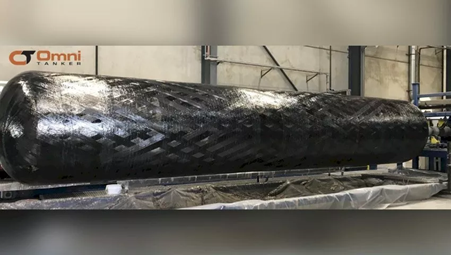
Photo Credit: UNSW
- SAM|XL (Delft, Netherlands) and TU Delft Faculty of Aerospace Engineering have been awarded the projects “Composite Liquid Hydrogen Tanks for Civil Aviation” and “Thermoplastics for Sustainable Aviation” by the Netherlands “Mobility Fund.” (Dec 2021)
- Toray Advanced Composites (Nijverdal, Netherlands) leads a consortium of 13 partners in The Netherlands to develop a composite LH2 tank for civil aviation. (Dec 2021)
- Fraunhofer IPT (Aachen, Germany) has also invested in new capabilities for laser-assisted tape winding (LATW) using TPC prepregs to produce pressure vessels such as hydrogen storage tanks. (Nov 2021)
Q&A from Airbus-CFM H2 program launch
Other questions asked during the Airbus-CFM H2 demonstrator program press event included:
Why use an A380 and a Passport engine?
Klauke noted the A380 provides plenty of space to install all of the necessary equipment inside the plane, including the LH2 tanks and their sealed containment, fuel delivery and testbed monitoring systems, as well as a test monitoring station. Also, having four engines for power, this aircraft offers the room and capacity to install an extra engine just for testing purposes.
Ali noted that the Passport is quite representative of the engines being researched for the future, including a core that is similar to the latest commercial jet engines. What is key is how to convert LH2 to gas and how to modify the combustion chamber accordingly, said Gaël Méheust, CEO of CFM International. “The Passport works fine for this. We could have used the LEAP but it would require more structural engineering to accommodate due to its larger size and heavier weight.” Ali said that scaling from the Passport to other engines is something GE Aviation and CFM know how to do. The point, he said, is to understand the changes that H2 combustion causes, especially in the core and to build the data points so that the team can develop the solutions necessary for future H2-based powerplants.
What materials will be used for the fuel pipes and seals in an H2 engine?
In light of the high temperatures noted by Ali, this could indeed be an issue. CFM responded that both GE and Safran have a huge arsenal of materials and technology developed to handle high temperatures, and will look at all of these, ranging from metal alloys and coatings to CMCs.
Why place the engine on top of a fuselage and what modifications will be made to the A380 as a testbed?
Klauke explained the position aft of the wings on top of the fuselage allows plenty of space and clean air to measure atmospheric conditions, emissions, etc. as well as the engine operation and fuel delivery system inside the plane. The only modification necessary is adding the structural stub for attaching the Passport engine.
Size of the four tanks and safety of their operation?
Klauke said that even though each tank will carry 100 kilograms of LH2, they will not fill the whole aircraft nor even the main deck, yet they are sufficient to power the test engine and provide meaningful data during flight demonstrations. With regards to safety, CFM says that ground tests will be conducted first, and only after these are complete will the system be installed for flight testing with Airbus. Ali at GE Aviation noted that his company has more than eight million hours of experience in combustion engines that use fuels with up to 100% H2 content via land-based stationary gas turbines for utility-type power applications, so it understands how to safely use H2-based fuels.
Photo Credit: Airbus: How to store liquid hydrogen for zero-emission flight
Does the testbed timing align with the original ZEROe timeline and what aircraft configuration will be chosen for service by 2035?
Klauke said it did support the latest timeline. This H2 demonstrator will be flown by the end of 2026, she notes, which will allow technology choices to be finalized by 2027. The configuration for Airbus’ first ZEROe aircraft will be decided by the end of this decade, said Klauke. Airbus is looking at three to four configurations, she said, between 100 to 150 passengers and 1,000 to 2,000 nautical miles of range. Each is linked to certain technology choices — some to fuel cells and others to direct H2 combustion. Our approach at Airbus, said Klauke, is to mature these technology bricks and then make our choice.
What about looking at an Open Fan engine?
Ali at GE Aviation noted that the RISE announcement last summer said all engines developed going forward will be able to use sustainable aviation fuel (SAF) and/or H2, regardless of their architecture. Klauke said that whether or not an Open Fan engine can be developed to use H2 has to be determined but this flight test program will help prepare for those decisions and developments.
Related Content
Cummins debuts 15-liter hydrogen engine and partners with Daimler for fuel cell trucks
Full-scale production of H2 ICE expected in 2027 while Daimler Truck will have initial fuel cell trucks available to select North American customers in 2024.
Read MoreU.K. team successfully recycles reclaimed continuous carbon fibers from pressure tanks
The U.K.’s NCC with partners B&M Longworth and Cygnet Texkimp achieve continuous carbon fiber recovery in a significant first step to deliver sustainable composite pressure vessels for the hydrogen market.
Read MoreToray announces growth, investment in carbon fiber composite materials
As part of its 2023-2025 management strategy, Toray projects 42% growth for pressure vessels, 30% growth in carbon fiber composite materials revenue and a doubling of capital investment.
Read MoreNCC reaches milestone in composite cryogenic hydrogen program
The National Composites Centre is testing composite cryogenic storage tank demonstrators with increasing complexity, to support U.K. transition to the hydrogen economy.
Read MoreRead Next
CW’s 2024 Top Shops survey offers new approach to benchmarking
Respondents that complete the survey by April 30, 2024, have the chance to be recognized as an honoree.
Read MoreComposites end markets: Energy (2024)
Composites are used widely in oil/gas, wind and other renewable energy applications. Despite market challenges, growth potential and innovation for composites continue.
Read MoreFrom the CW Archives: The tale of the thermoplastic cryotank
In 2006, guest columnist Bob Hartunian related the story of his efforts two decades prior, while at McDonnell Douglas, to develop a thermoplastic composite crytank for hydrogen storage. He learned a lot of lessons.
Read More








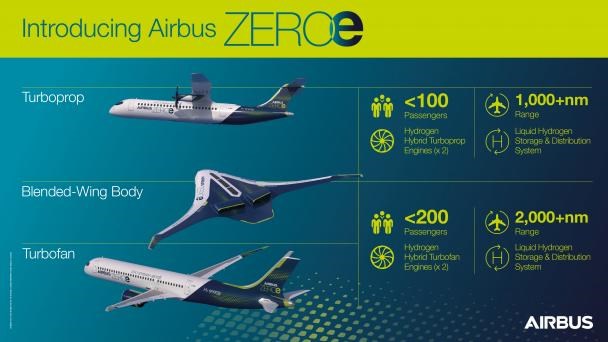

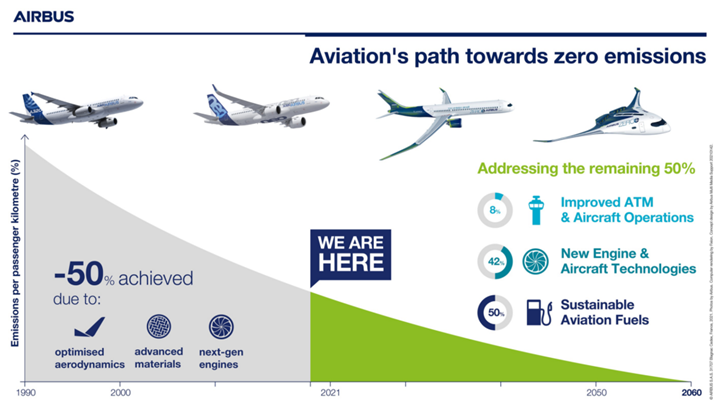
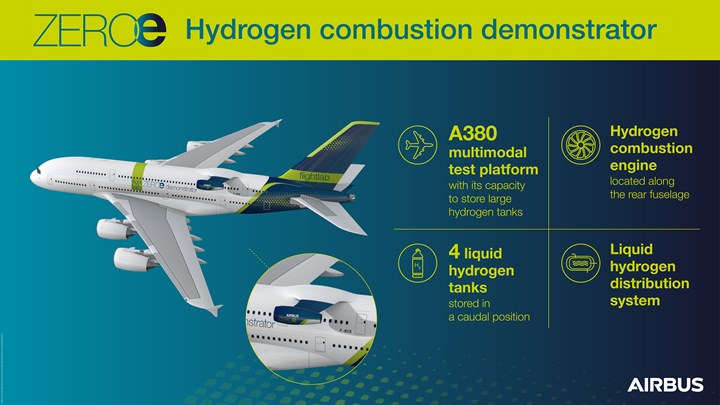
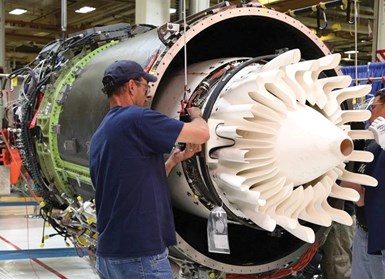
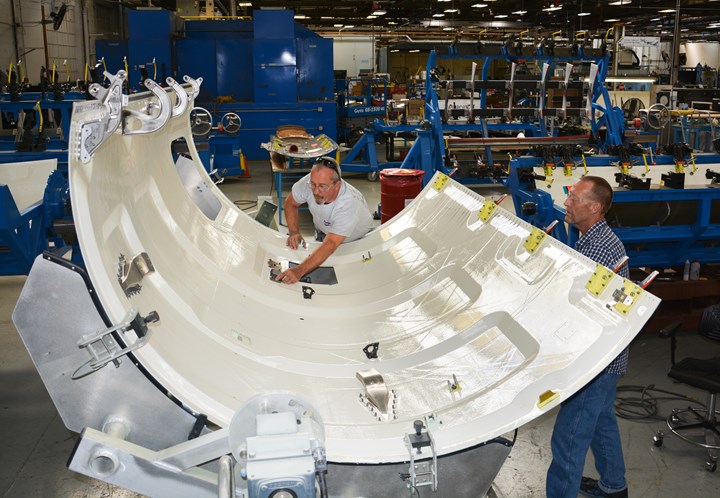
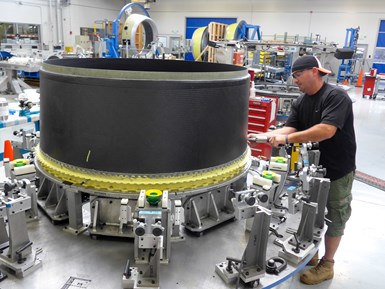

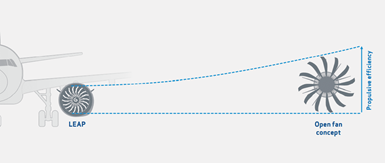









.jpg;maxWidth=300;quality=90)






